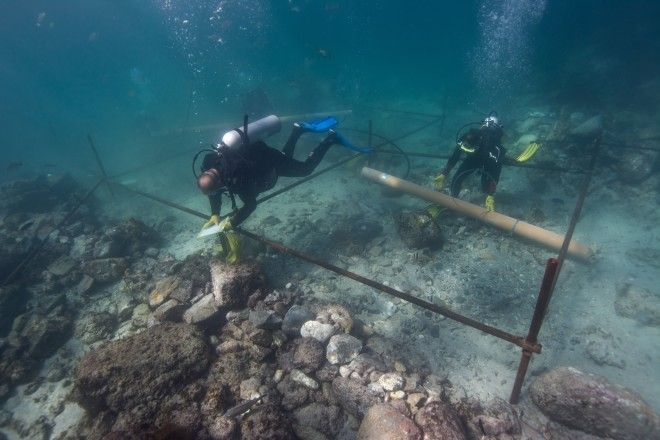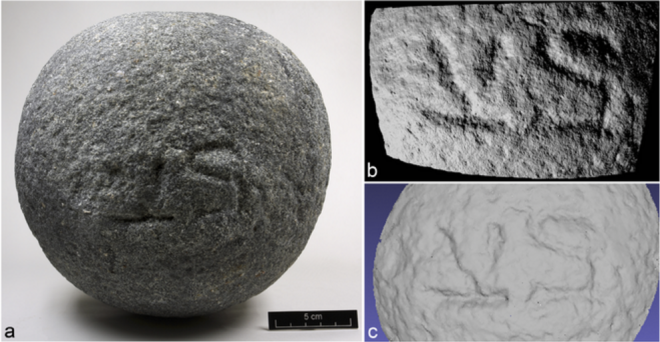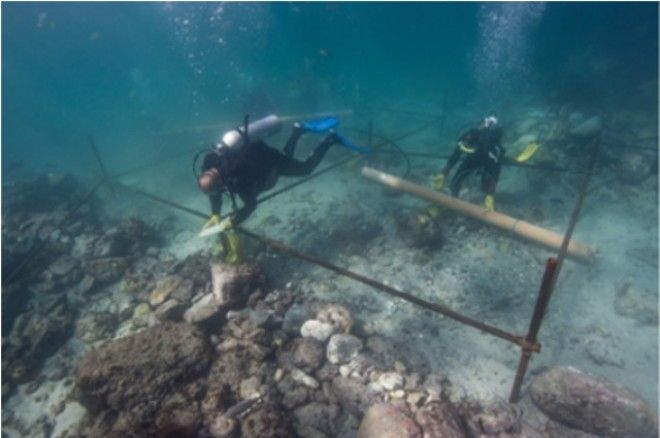Now researchers have discovered a shipwreck dating from just five years after da Gama made this first voyage to the East, in what is thought to be the earliest ship ever found from the Age of Discovery. Lying in coastal waters just off Oman, the wreck is thought to be that of the Esmeralda, which was destroyed in a storm that killed all the crew on board including the captain, Vicente Sodre, who was an uncle of da Gama. The wreck contains thousands of artifacts preserved in the sand of the shallow bay, including an incredibly rare silver coin known as an indio, of which only one other example is known to survive.

A CT scan of the rare silver indio coin, of which only one other is known to exist, and dates to 1499. David L. Mearns et al. 2016
The location of the ship was actually discovered in 1998, but it wasn’t until 2013 that a team of divers working in partnership with the Oman Ministry of Heritage and Culture and the private company Blue Water Recoveries finally started excavations. They have published their preliminary findings in The International Journal of Nautical Archaeology, although with thousands of objects to get through, the work is far from complete.
The Esmeralda was actually one of two Portuguese trade ships to have met their end in the storm that hit the Al Hallaniyah islands off southern Oman, the other being the Sao Pedro that was driven ashore, where the crew were able to disembark. Both ships left Lisbon in 1503, and were stationed to protect Portuguese factories off the coast of India from Muslim merchants, who up until da Gama’s newly found southern route, controlled all trade from India to the West. But Vicente Sodre and his brother Bras, who was captain of the Sao Pedro, had other ideas and decided to raid the coast of the Arabian Peninsula, where the ships eventually met their end.
Advertising

One of the stone cannonballs bearing the initials of the ship's captain. David L. Mearns et al. 2016
The physical remains of the ship no longer survive; all that is left are the objects that it once carried, and they give a fascinating glimpse into these early days of discovery. The ships were heavily armed, containing guns and stone cannonballs bearing the letters VS, thought to stand for Vicente Sodre. They also found the ship’s bell, which is thought to be the earliest example of a ship bell ever discovered. One of the most mysterious finds is that of a copper disc featuring the Portuguese coat of arms, of which nothing of its sort has ever been found, and is suspected to be some form of marine astrolabe.
Finally, there is the indio coin, which was minted in 1499 specifically for the anticipated trade with India, that heavily indicates this is indeed the Esmeralda wreck. The team will now continue to explore the waters surrounding Oman in the hope of finding other undisturbed wrecks dating from a similar age.

